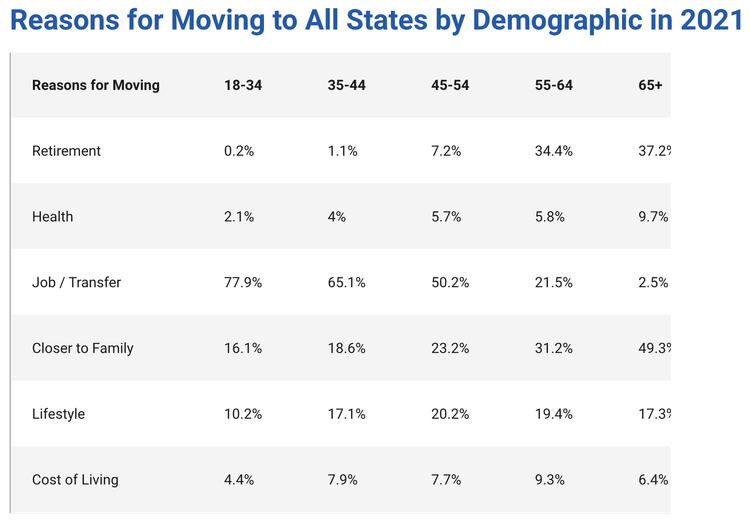20 years ago, when I was researching industries and career options I focused on one main variable: demographics. I read research from multiple sources that showed that you could predict the future strength of an industry by the demographic trends. What’s an example of this? I chose to enter the medical device industry because of the aging of the Baby Boomers. An aging population that was the most active and affluent in modern history meant that there would be a higher demand for orthopedic surgery, including joint replacements and spinal surgery. It’s just the way things work.
Be Sure To Check Out the Podcast on This Topic
Demographics is also the lifeblood of commercial real estate, along with job and income growth. These make up some of the statistics that we use when we analyze which markets we are interested in targeting for investing. We like to see figures for all three of these above the national averages and the stronger the better. If we are analyzing smaller cities, like Fort Myers, FL for instance, these numbers should be higher than larger cities.
I talk more extensively about how demographic trends affect the multifamily real estate market in Chapter 7 of my book, “Next-Level Income”. If you want to predict the future trends in real estate, you need to know where people are moving and why. So let’s explore where people moved in 2021 and how you can use this information to make better choices for your investments going forward.
Annual 2021 United Van Lines National Movers Study
One of my favorite studies each year is the United Van Lines National Movers Study. It comes out in January of each year and it highlights what many of us already see and hear; where are the most popular destinations for those moving?
The Top Inbound States Of 2021 Were:
-
Vermont
-
South Dakota
-
South Carolina
-
West Virginia
-
Florida
-
Alabama
-
Tennessee
-
Oregon
-
Idaho
-
Rhode Island
Of the top ten inbound states, six — Vermont, South Dakota, West Virginia, Alabama, Oregon and Idaho — are among the 20 least densely populated states in America, with less than 100 people per square mile. And, Tennessee and South Carolina are among the top 25.
Why is this important? The overall numbers for these low-density states may not be that meaningful. It’s why we like to target larger cities with populations above 1 million and smaller, fast-growing cities with populations above 250,000 people. In addition, the states need to be business friendly and cities need to have enough employers in different industries to maintain a robust economic environment.
The Top Outbound States For 2021 Were:
-
New Jersey
-
Illinois
-
New York
-
Connecticut
-
California
-
Michigan
-
Massachusetts
-
Louisiana
-
Ohio
-
Nebraska
There aren’t a lot of surprises on this list! People are moving from high-cost, high-tax states in the Northeast and choosing the Southeast (yellow represents outbound states and blue represents inbound). One thing to note is that some states have cities with very high inbound populations (like Katy, TX that led the country in population growth and Wilmington, NC at 80% inbound), even if a state isn’t represented. This is a country-level view:
Why are people moving? Let’s take a look by age group:



Subscribe to The Next-Level Income Show